MARIANI’S
Virtual Gourmet
December
11, 2016
NEWSLETTER
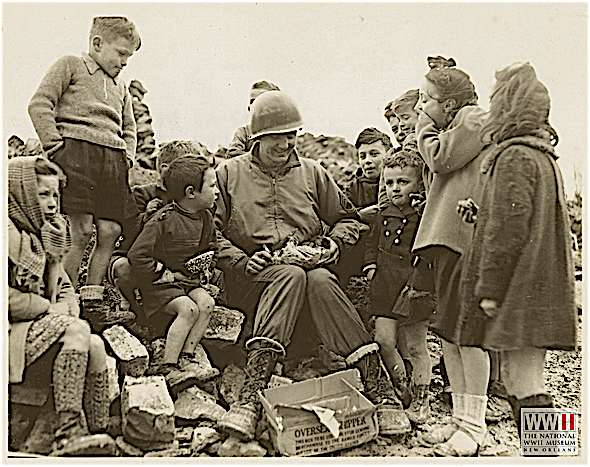
❖❖❖
IN THIS ISSUE
BOOKS AND GIFTS FOR THE HOLIDAYS
By John Mariani
NEW YORK CORNER
STORICO
By John Mariani
NOTES FROM THE WINE CELLAR
BELL CELLARS
by Geoff Kalish
❖❖❖
BOOKS AND GIFTS
FOR THE HOLIDAYS
By John Mariani

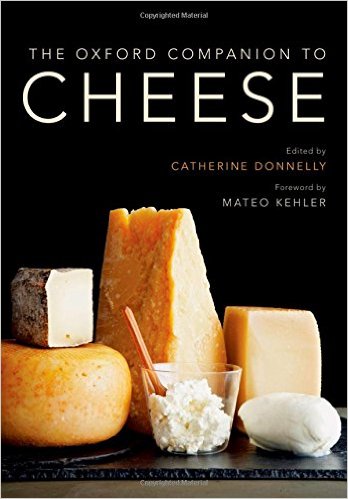
OXFORD
COMPANION TO CHEESE edited by Catherine
Donnelly (Oxford U. Press;
$39.16)—Although not the last
word on a fast-changing subject, this 3 ½-pound,
888-page tome covers 855
subjects, from Abbaye de Tamié made by monks to Ziraly Panir (an
Iranian sheep’s cheese). Donnelly, as
e-of-c, has the cred—she’s a
Professor of Nutrition and Food Science at the U.
of Vermont, backed by 325 experts.
Aside from the cheese identities, there is info on
cheese service, even
pregnancy advice and charming if irrelevant
tidbits like Louis Pasteur’s
writing nightly love letters to his wife. Lots of
science here, too: molecular
biology, yeasts, molds, and plenty more. It would
take a thousand hours to look all this up on
Wikipedia.
FRENCH WINE: A
HISTORY
by Rod Philips
(University
of
California Press,
$34.95). 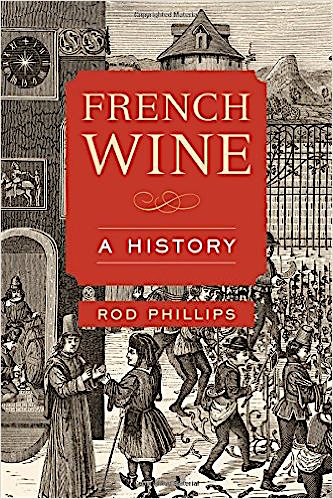 This
latest in the fine series on
the world’s wines published by U. of California
Press treats thoroughly a
subject that, oddly enough, has never been given
such an in-depth analysis. The
story begins more than 2,500 years
ago (though half the book is about what happened
after 1870), and Philips brings us
right up through today, what he calls a “golden
age” for French wine, owing to
technological and generational shifts and global
influences and taste. Of course, it is full of
great and
startling characters, including Thomas Jefferson
and Baron Philippe de
Rothschild.
Sadly, Philips writes
like the academic he is. His prose is flat and
clinical, especially for a
subject that should be far livelier.
But it’s the best book out there on the
subject and has been a long time
in coming.
This
latest in the fine series on
the world’s wines published by U. of California
Press treats thoroughly a
subject that, oddly enough, has never been given
such an in-depth analysis. The
story begins more than 2,500 years
ago (though half the book is about what happened
after 1870), and Philips brings us
right up through today, what he calls a “golden
age” for French wine, owing to
technological and generational shifts and global
influences and taste. Of course, it is full of
great and
startling characters, including Thomas Jefferson
and Baron Philippe de
Rothschild.
Sadly, Philips writes
like the academic he is. His prose is flat and
clinical, especially for a
subject that should be far livelier.
But it’s the best book out there on the
subject and has been a long time
in coming.
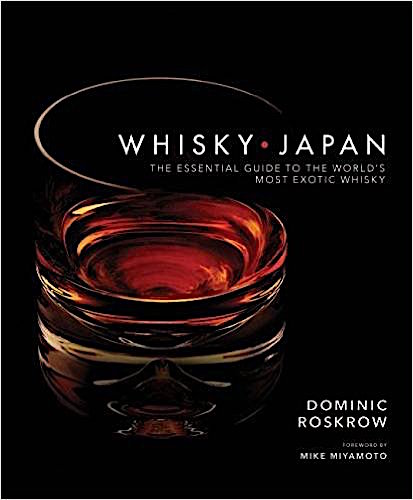
WHISKY JAPAN by Dominic
Roskrow (Kodansha,
$34.96). Anyone
who doubts the
excellence of Japanese whisky has either never
sampled any or never left the
Scottish moors.
An open mind on
the subject of whisky is rewarded with myriad
pleasures, and this “Essential
Guide to the World’s Most Exotic Whisky” details a
century-old history of
making brown spirits right up to the present, when
distillers have created cult
whiskeys, like Karuizawa, whose special bottlings
can bring $30,000 and more. There
are profiles of the major
distillers, detailed tasting notes, and a list of
the best bars worldwide
serving Japanese whiskey. Dominic
Roskrow has long experience as an award-winning spirits journalist, and the
illustrations, paper stock and
presentation is all complementary to the whiskeys
themselves.
ENCYCLOPEDIA OF
VEGETARIAN CUISINE
by Esterele Payany (Flammarion, $39.95) Although I
have real problems with
the irate 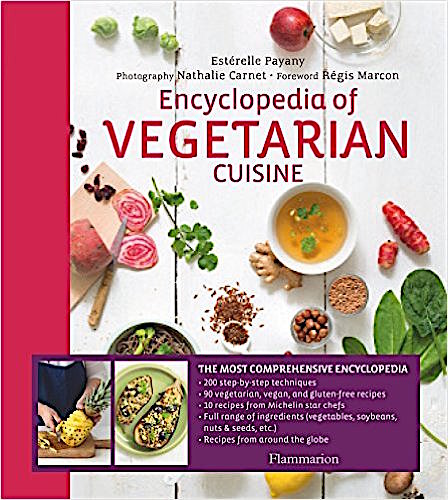 tenor of
vegan rants, vegetarian cuisine is as old as man
and has become
far more diverse than ever in history, so that the
non-vegetarian will find
this fat, beautifully illustrated book a textbook
for everything from its
descriptions of fruits and vegetables to the way
to make a perfect array of
omelets, all with the precision that underpins all
fine French cuisine. Those
who are vegetarians, of whatever stripe, will go
through it for years without
exhausting its pleasures.
tenor of
vegan rants, vegetarian cuisine is as old as man
and has become
far more diverse than ever in history, so that the
non-vegetarian will find
this fat, beautifully illustrated book a textbook
for everything from its
descriptions of fruits and vegetables to the way
to make a perfect array of
omelets, all with the precision that underpins all
fine French cuisine. Those
who are vegetarians, of whatever stripe, will go
through it for years without
exhausting its pleasures.
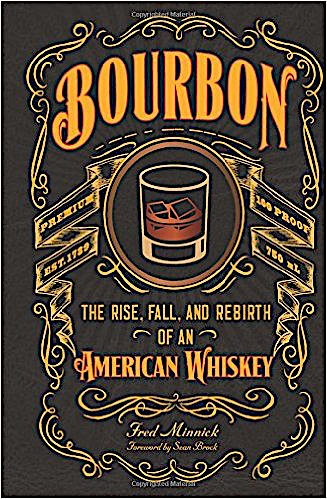
BOURBON: THE RISE,
FALL, AND REBIRTH OF AN AMERICAN WHISKEY (Voyageur Press, $25). As I happily wrote on the
back cover of Bourbon: "It's
been
clear for some time now that Fred Minnick is
America's finest authority on
spirits, and his new book on bourbon seals the
deal--impeccably researched,
beautifully illustrated, and written with such
informed individuality that
reading the book is like listening to the engaging
teacher whose lectures
enthralled you as much as enlightened you. There's
never a last word on any
subject, but Minnick's new book is unlikely to be
exceeded by anything better
for a long time to come.”
WINE AND SPIRITS FOR THE HOLIDAYS
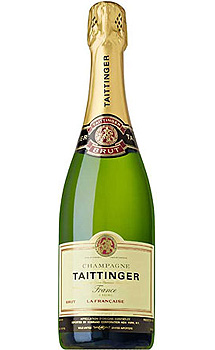
TAITTINGER CHAMPAGNE--Taittinger has
always been a personal favorite of mine, for it
hits that perfect balance of fruit, acid,
effervescence and backbone I like in a bubbly, and
the brand has never gone for the bone-dry, pas dosage
style of so many ridiculously priced prestiges cuvées that
taste too often like acidic water. Taittinger is
voluptuous as a rosé ($70) and as a brut ($50), a
blend of 30 different chardonnay and pinot noir
vintages it is perfect to serve as an
apéritif, with caviar and smoked salmon, and it
will go well with everything but red meats or very
sweet desserts.
REDBREAST SINGLE POT STILL SHERRY FINISH
LUSTAU EDITION
IRISH WHISKEY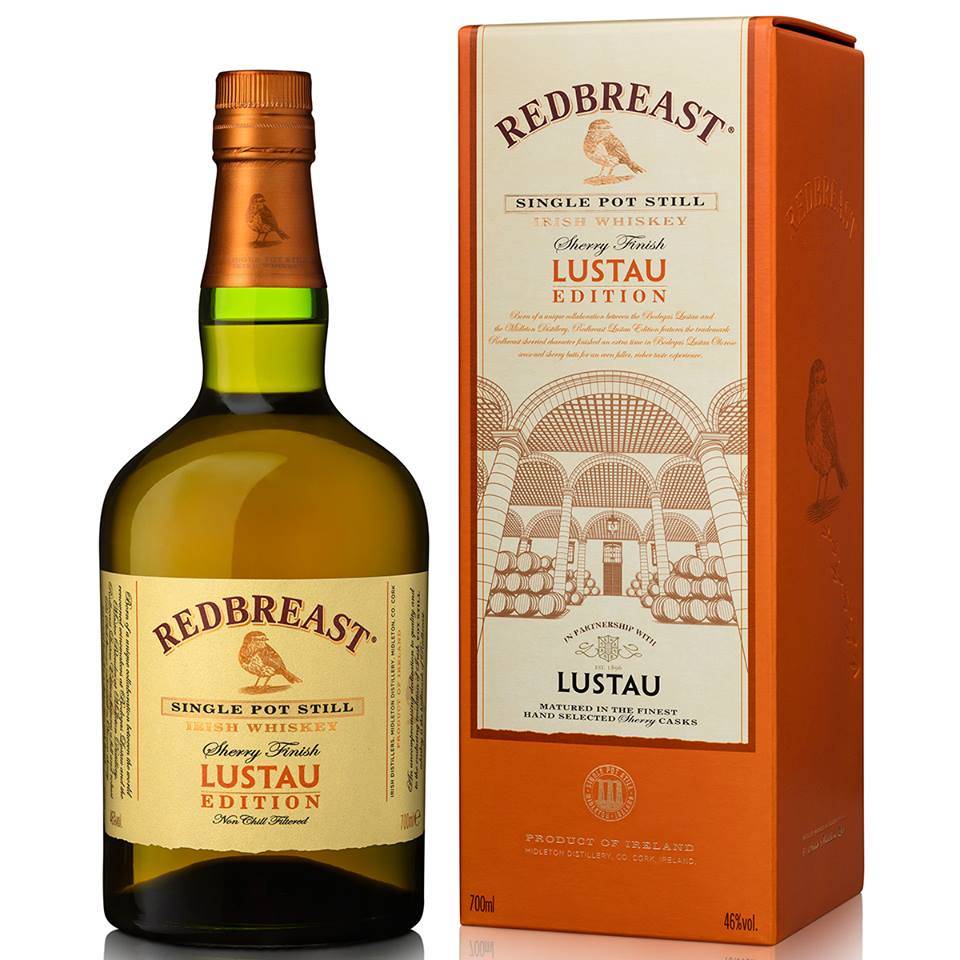 ($69)—Dating back to 1903, Redbreast is Ireland’s
largest selling
single pot still whiskey, and it has always had a
distinctive sherry note to
it. This Lustau edition, which refers to a
century's old alliance with Bodegas Lustau and
Midelton Distillery,
is bottled at
46% alcohol, after maturation in sherry casks for
9-12 years, then finished in
first-fill sherry butts from Lustau.
($69)—Dating back to 1903, Redbreast is Ireland’s
largest selling
single pot still whiskey, and it has always had a
distinctive sherry note to
it. This Lustau edition, which refers to a
century's old alliance with Bodegas Lustau and
Midelton Distillery,
is bottled at
46% alcohol, after maturation in sherry casks for
9-12 years, then finished in
first-fill sherry butts from Lustau.
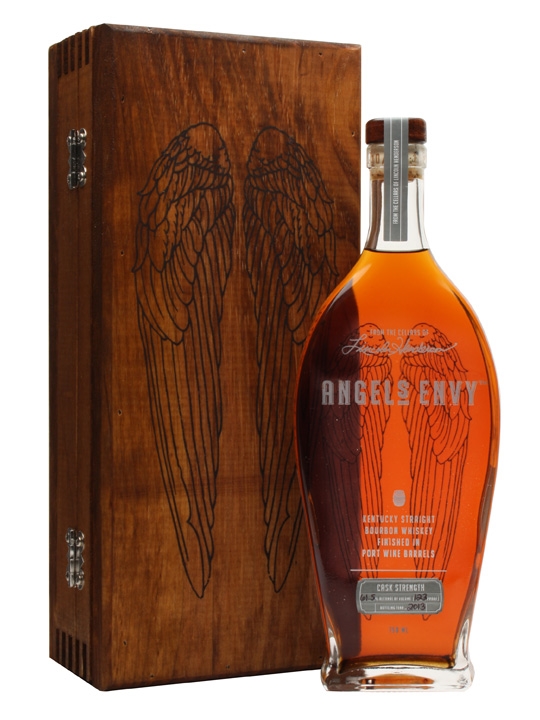 ANGEL’S
ENVY CASK STRENGTH BOURBON ($180)—Only
8,000
bottles of this critically acclaimed bourbon was
made for 2016, aged up to
seven years in Portuguese oak and released at cask
strength of 62.3% alcohol,
so it packs a wallop but has all sorts of nuances
when allowed to flow slowly
over the palate.
ANGEL’S
ENVY CASK STRENGTH BOURBON ($180)—Only
8,000
bottles of this critically acclaimed bourbon was
made for 2016, aged up to
seven years in Portuguese oak and released at cask
strength of 62.3% alcohol,
so it packs a wallop but has all sorts of nuances
when allowed to flow slowly
over the palate.
NOVO FOGO SINGLE BARREL #87 ($99)—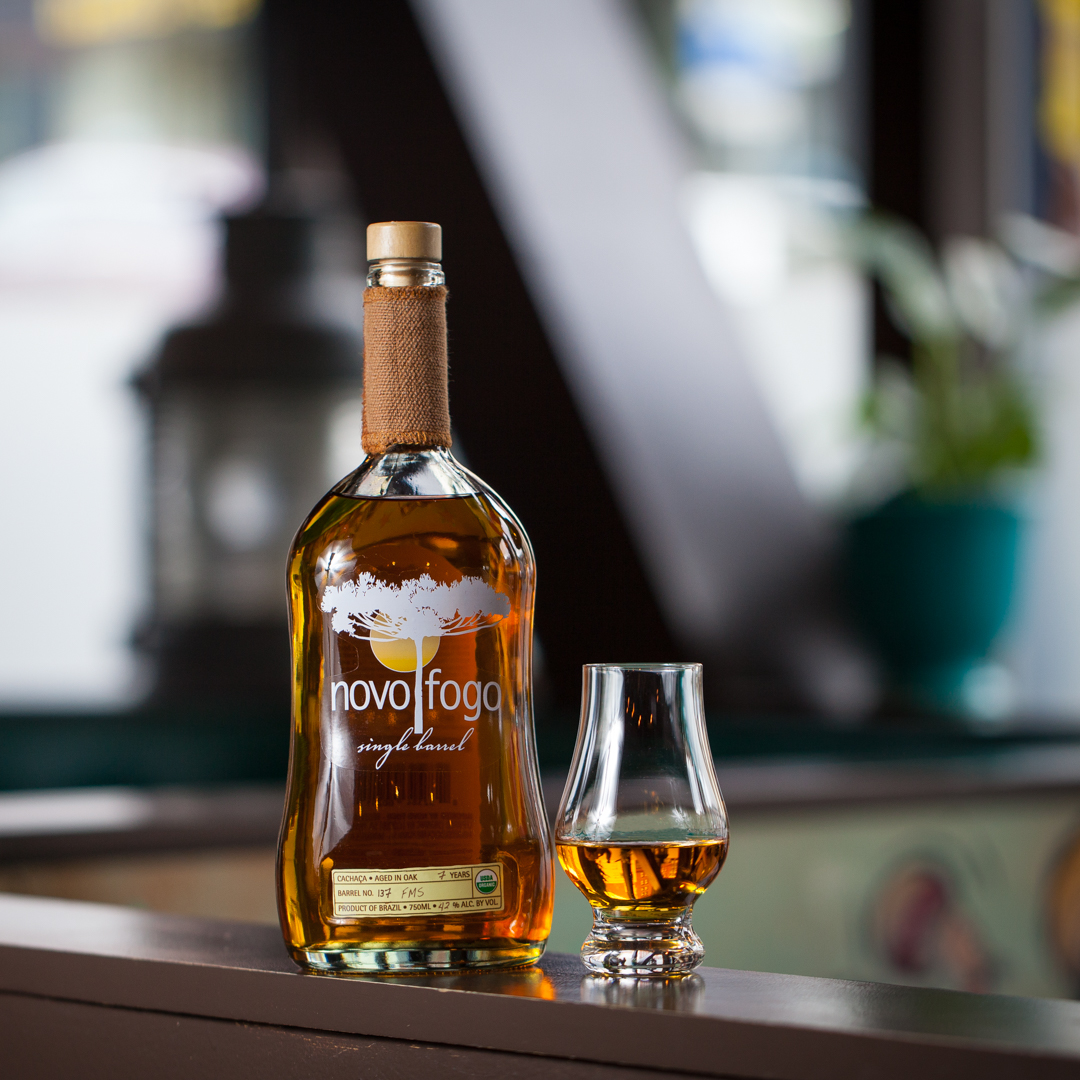 Novo Fogo
is renowned
for its cachaças, made from organic sugar cane in
the state of Espirito Santo,
Brazil. Most
cachacas are little
aged or not at all, so this example, which spends
five years in American oak
barrel and released at 41% alcohol, is a rarity
indeed, so it takes on the
heartier notes of a good rum while retaining the
citrusy, fruity quality of
cachaça, so you can drink it neat rather than
waste it in a caipirinha.
Novo Fogo
is renowned
for its cachaças, made from organic sugar cane in
the state of Espirito Santo,
Brazil. Most
cachacas are little
aged or not at all, so this example, which spends
five years in American oak
barrel and released at 41% alcohol, is a rarity
indeed, so it takes on the
heartier notes of a good rum while retaining the
citrusy, fruity quality of
cachaça, so you can drink it neat rather than
waste it in a caipirinha.
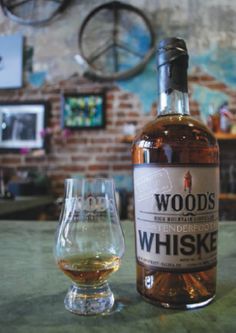 WOOD’S HIGH MOUNTAIN
TENDERFOOT WHISKEY ($50)—Although
there are now several spirits distillers in
Colorado, they are still novelties
in the market and therefore these spirits make
a
good holiday gift. Wood’s is located in downtown
Salida, CO, made by PT and Lee Wood
since 2012, who came up with the idea on a rafting
trip. This
is a single malt
style, blended from 77% barley malts, 13 % malted
rye, and 10% malted wheat,
with an alcohol level of 45%. There’s a distinct
chocolate-y flavor among the
cedar and spices you won’t easily find in other
malt whiskies.
WOOD’S HIGH MOUNTAIN
TENDERFOOT WHISKEY ($50)—Although
there are now several spirits distillers in
Colorado, they are still novelties
in the market and therefore these spirits make
a
good holiday gift. Wood’s is located in downtown
Salida, CO, made by PT and Lee Wood
since 2012, who came up with the idea on a rafting
trip. This
is a single malt
style, blended from 77% barley malts, 13 % malted
rye, and 10% malted wheat,
with an alcohol level of 45%. There’s a distinct
chocolate-y flavor among the
cedar and spices you won’t easily find in other
malt whiskies.
HIGHLAND PARK FIRE EDITION ($200)—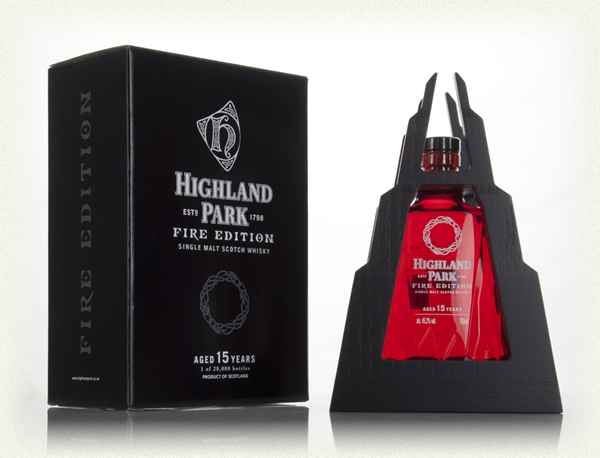 This
special release
15-year-old single malt was matured in
Port-seasoned casks, released at 45.2%
alcohol, and, with only 28,000 bottles produced,
it’s not easy to find, which
puts it on the most wanted list of Scotch
connoisseurs. It also has a
distinctive Norse symbol on the label and is
bottled in a ruby red glass
“meant to represent the fierce and molten world of
the Fire Giants” and comes in
a black wood cradle.
This
special release
15-year-old single malt was matured in
Port-seasoned casks, released at 45.2%
alcohol, and, with only 28,000 bottles produced,
it’s not easy to find, which
puts it on the most wanted list of Scotch
connoisseurs. It also has a
distinctive Norse symbol on the label and is
bottled in a ruby red glass
“meant to represent the fierce and molten world of
the Fire Giants” and comes in
a black wood cradle.
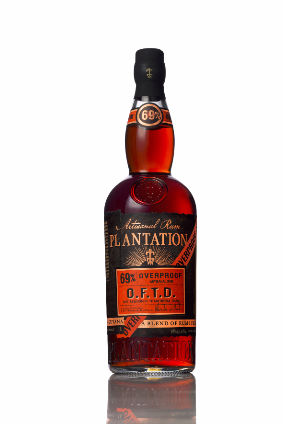
PLANTATION O.F.T.D. OVERPROOF RUM ($32)—For aficionados of old style
navy dark rums, this new entry,
at 69% alcohol, has the deep color and the body of
the genre and the characteristic bottom sweetness,
but is not as dark as Gosling’s or Meyers’s. The “O.F.T.D” derives from
spirits writer David Wondrich
tasting the rum with Plantation’s distiller and
exclaiming “Oh, f**k, that’s
delicious!” but the company prefers to say it
means “Old Fashioned
Traditional
Dark.” This
is a product of
France’s Maison
Ferrand that makes
Pierre Ferrand Cognac.
I see by the NY Times style
section that you can purchase gifts like an ash
tray for $2,000 and a wristwatch for $164,000,
both of which may well last a lifetime.
But more practical, time-proven gifts people
don't expect are the best gifts of all.
Here are a few I'd treasure.
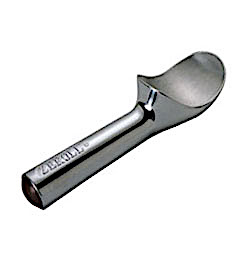 The Original Zeroll
Ice Cream scoop, which contains a heat
conductive fluid sealed within the handle, is a
marvel of form and function, and,
by eliminating compression, gives you to 20%
more scoops of ice cream per
gallon. The scooper is a brilliant example of
American ingenuity born from a
moment’s realization that something could be
done better. According to Zeroll’s
history, “Its
revolutionary
design was the inspiration of Sherman Kelly of
Toledo, Ohio. As
the story goes, Kelly was vacationing in West
Palm Beach, Florida, when he
observed a young woman dipping ice cream.
Noticing the blisters on her hand
from the constant use of the disher in the hard
ice cream, he thought to
himself, `there must be a better way to serve
ice cream,’" so in 1933, Kelly developed the
design
made of cast aluminum (manufactured by Alcoa),
whose interior fluid transferred
heat from the user’s hand, and thereby defrosted
the ice cream, with no need to rinse the dipper in
water between servings. The
scooper is one of the few simple things in the
world that works perfectly and
does so forever. It comes in different sizes but
can be found for $12 and up.
The Original Zeroll
Ice Cream scoop, which contains a heat
conductive fluid sealed within the handle, is a
marvel of form and function, and,
by eliminating compression, gives you to 20%
more scoops of ice cream per
gallon. The scooper is a brilliant example of
American ingenuity born from a
moment’s realization that something could be
done better. According to Zeroll’s
history, “Its
revolutionary
design was the inspiration of Sherman Kelly of
Toledo, Ohio. As
the story goes, Kelly was vacationing in West
Palm Beach, Florida, when he
observed a young woman dipping ice cream.
Noticing the blisters on her hand
from the constant use of the disher in the hard
ice cream, he thought to
himself, `there must be a better way to serve
ice cream,’" so in 1933, Kelly developed the
design
made of cast aluminum (manufactured by Alcoa),
whose interior fluid transferred
heat from the user’s hand, and thereby defrosted
the ice cream, with no need to rinse the dipper in
water between servings. The
scooper is one of the few simple things in the
world that works perfectly and
does so forever. It comes in different sizes but
can be found for $12 and up.
Farberware
Stovetop Percolator--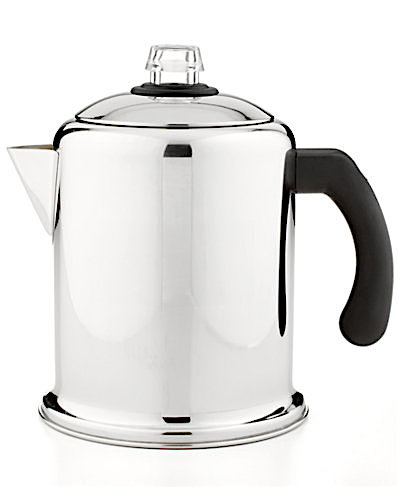 and her
coffee was always rich, flavorful and at the
ready, thanks to her old stovetop percolator, by
which boiling water is forced
through a stem to filter down through ground
coffee. Part of the allure was the
moment when the little glass
bubble on the top started to throb with coffee and
made a unique popping sound—used
as a ten-note jingle in Maxwell House coffee ads
that was played on a wooden
block instrument.
and her
coffee was always rich, flavorful and at the
ready, thanks to her old stovetop percolator, by
which boiling water is forced
through a stem to filter down through ground
coffee. Part of the allure was the
moment when the little glass
bubble on the top started to throb with coffee and
made a unique popping sound—used
as a ten-note jingle in Maxwell House coffee ads
that was played on a wooden
block instrument.
The first percolator was
invented in 1804 by the America-British
physicist Benjamin Thompson, and the
stove top model was crafted by Parisian
tinsmiths in 1819, perfected in 1889 by
a patent owned by an Illinois farmer named
Hanson Goodrich.
Only in the past
year have I acquired a percolator and find it
just as marvelous a machine as it
was in the 1950s and my coffee has never tasted
better, no matter what brand I use. The
8-cup Farberware model is the
simplest and most classic of them all, all for
about twenty bucks.
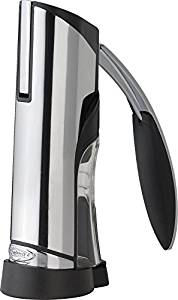
Trudeau Automatic Lever Corkscrew--I've
seen hundreds of corkscrew gadgets not worth the
money, especially when you can buy the
formidably reliable classic "waiter's corkscrew"
with its double-action leverage for about ten
dollars. But for something very beautiful
and very smooth indeed, I like the Trudeau
Automatic. It comes with a foil seal cutter,
then you merely lower a lever arm into the cork,
and--(since this is a French machine) Voila!--with
little effort the cork slides out. It's a
refined technique, not a showy one, and shows a
little respect for the holiday bottlings you
will open. You'll find in on-line for $60-$70.
❖❖❖
By John Mariani
Storico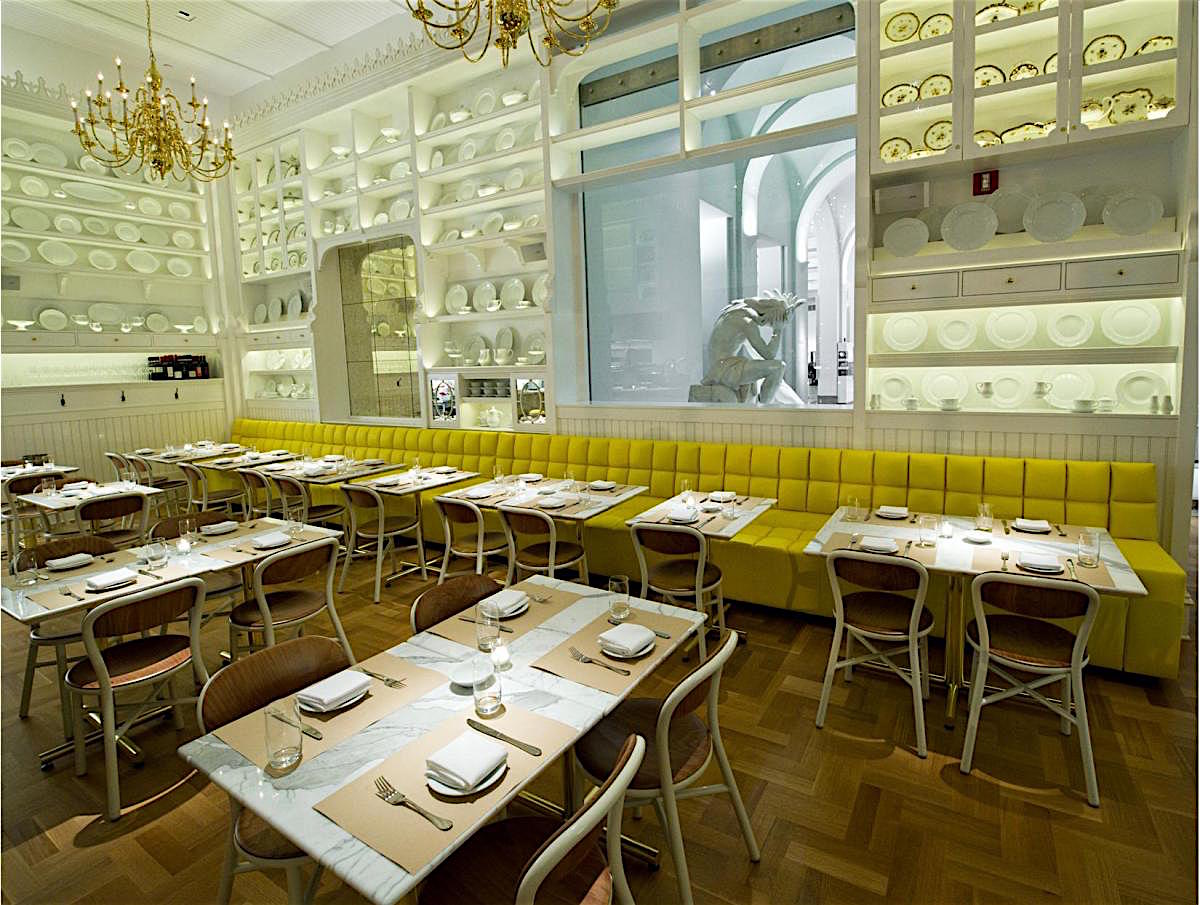
New York Historical Society
170 Central Park West (at 77th
Street)
212-873-3400
There
is a fine new chef at Storico, which has
become one of my favorite restaurants
on the Upper West Side, quite a ways from
the rush and bustle below 72nd
Street.
The fact that Storico is
set within the New-York Historical Society
lends it a certain refinement, and
right now, during the Christmas holidays,
both are well worth a festive visit.
The
restaurant was opened four years ago by Stephen
Starr, who in addition to
Buddakan and Morimoto in NYC, recently opened the
much heralded Le Coucou
downtown. At Storico the light pours in through
stately windows against milk
white walls, puts a gleam on the historic brass
chandelier, and brightens lemon
yellow banquettes and fifteen-foot shelves set
with antique chinaware from the
museum's vast collection. 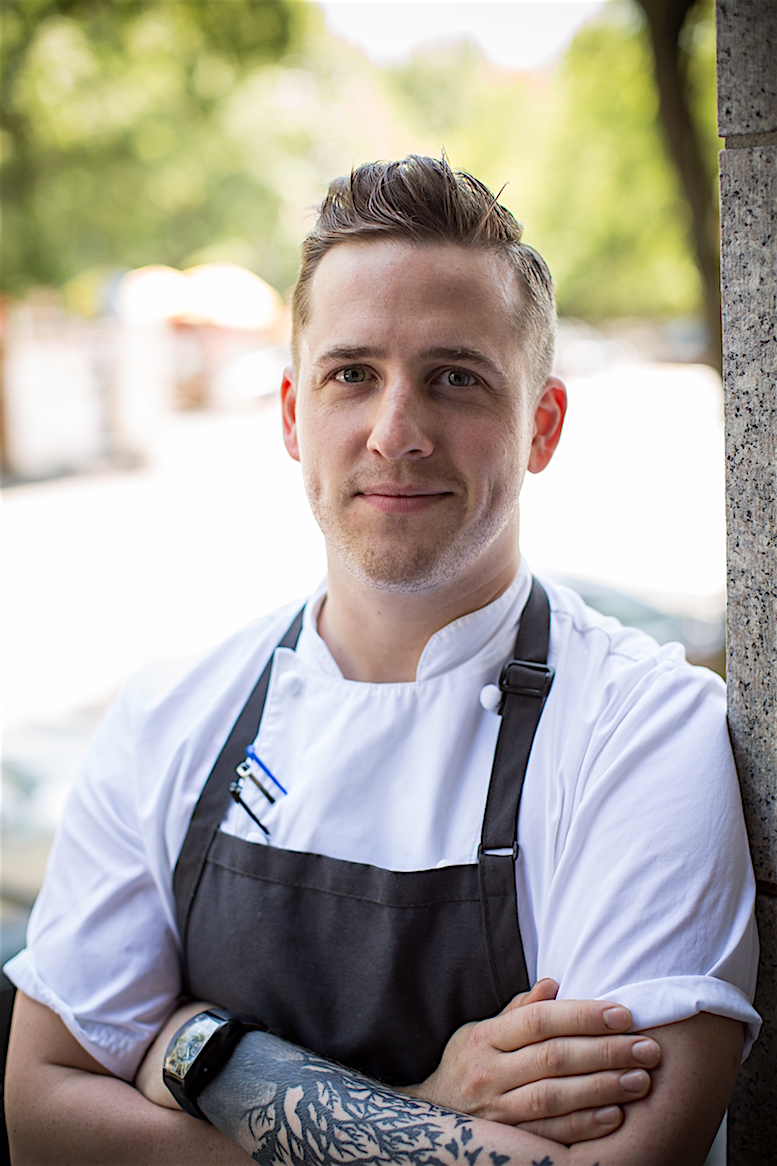 During
the
day it’s a bright and cheery spot to dine, with an
open kitchen and marble
counter, while at night its has a casual
sophistication that has increasingly
drawn a neighborhood crowd. Thank
heavens they’ve turned down the once intrusive
music and no longer lower the
lighting after 8 p.m.
During
the
day it’s a bright and cheery spot to dine, with an
open kitchen and marble
counter, while at night its has a casual
sophistication that has increasingly
drawn a neighborhood crowd. Thank
heavens they’ve turned down the once intrusive
music and no longer lower the
lighting after 8 p.m.
The
new young chef is Tim Kensett, whose tenure at
London’s The Square and the
seminal Italian restaurant The River Café shows in
the lightness of his touch,
the appreciation of ingredients, and a respect for
the traditions of Italian
cuisine as set by Ruth Rogers and the late Rose
Gray. He’s a jolly Brit with a
good rapport with his guests, so I hope he stays
put for a long time. He
deserves more media attention.
We
began with an array of antipasti that include a crudo of Albacore tuna with
just-pressed, very green Capezzana
olive oil, baby radish and saline bottarga
($18); crusty,
smoky bruschetta
topped with the best wild
mushrooms I’ve had this fall ($20), including true
funghi porcini; and buffalo
mozzarella from Campania ($18) with roasted Long
Island pumpkin, wilted
dandelion and grilled chili, though imported
mozzarella, which needs to be made daily, is
never as fresh as it should be.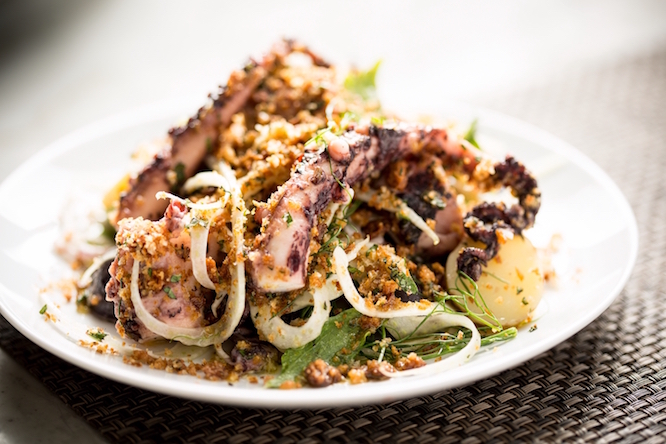
All
the pastas at Storico are wonderful, from simple
housemade tagliarini with good butter and
shavings of white truffles ($17, with
5 grams of truffles $80, with 10 grams $140), to capellacci di zucca ($17 or $24),
which
are pumpkin-stuffed
“little hats”—a
holiday pasta—dressed with marjoram, dried chili
that perks it all up and
parmesan. Only slightly unorthodox is the risotto
made with wheatberries, which
give it a nutty flavor, blended with oxtail
marrow, and pickled radicchio ($19
or $26).
Also a bit out of
the ordinary is the rigatoni with black cabbage
(kale) impressed into the
dough, served with pine nuts and pecorino ($19 or
$26).
Main
courses all have a novel twist to them, too, as
with a luscious and tender
roasted duck with braised borlotti beans,
caramelized endive and aged balsamic
($36); and
pan-seared skate wing
with charred escarole and a preserved lemon
gremolata. Half a lobster is cooked
in butter with wilted rainbow chard and toast
($36).
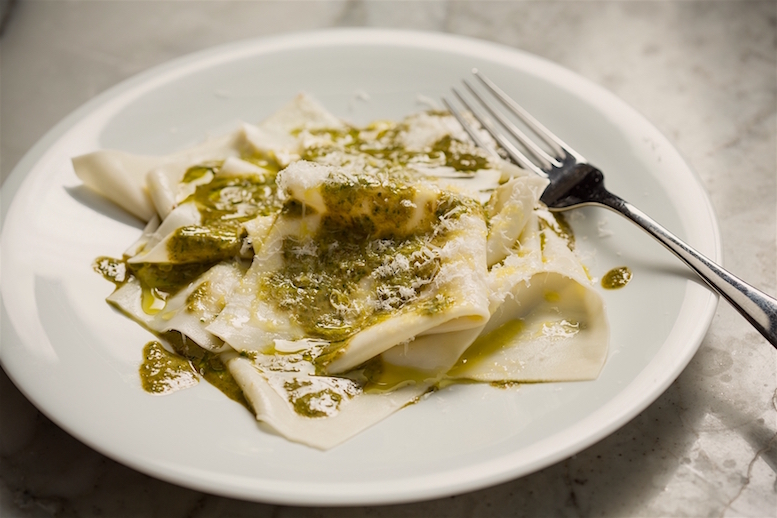 Do not skip
dessert at Storico.
The lemon and sour cream tart with
raspberries ($9) is light and has a fine balance
of sweetness and tartness, and
the dark chocolate-hazelnut tart with crème
fraîche ($9) makes a great ending,
perhaps with a dessert wine.
Do not skip
dessert at Storico.
The lemon and sour cream tart with
raspberries ($9) is light and has a fine balance
of sweetness and tartness, and
the dark chocolate-hazelnut tart with crème
fraîche ($9) makes a great ending,
perhaps with a dessert wine.
Cocktails run
$14-$15 and there’s a glass of
Valdo prosecco for just $12.
The wine
list is admirable for its range
and unusual labels from smaller vintners, though
price hikes of 300 percent on
some bottlings is tough to swallow. A Muri Gries
Müller-Thurgau 2014 that sells
for $14 in a wine store is $50 here and a
Polvanera Primitivo 2014 shouldn’t be
$54 when you can buy it for $11.
As
noted, Kensett deserves attention, not just from
the NYC media, which rarely
venture north of 14th Street, but from cooks
around town who need a refresher
in how to prepare innovative but simple Italian
cuisine the way it should be.
Storico
is open Tues.-Sun. 11 a.m. to 10
p.m.
❖❖❖
MORE WIDELY AVAILABLE
by Geoff Kalish
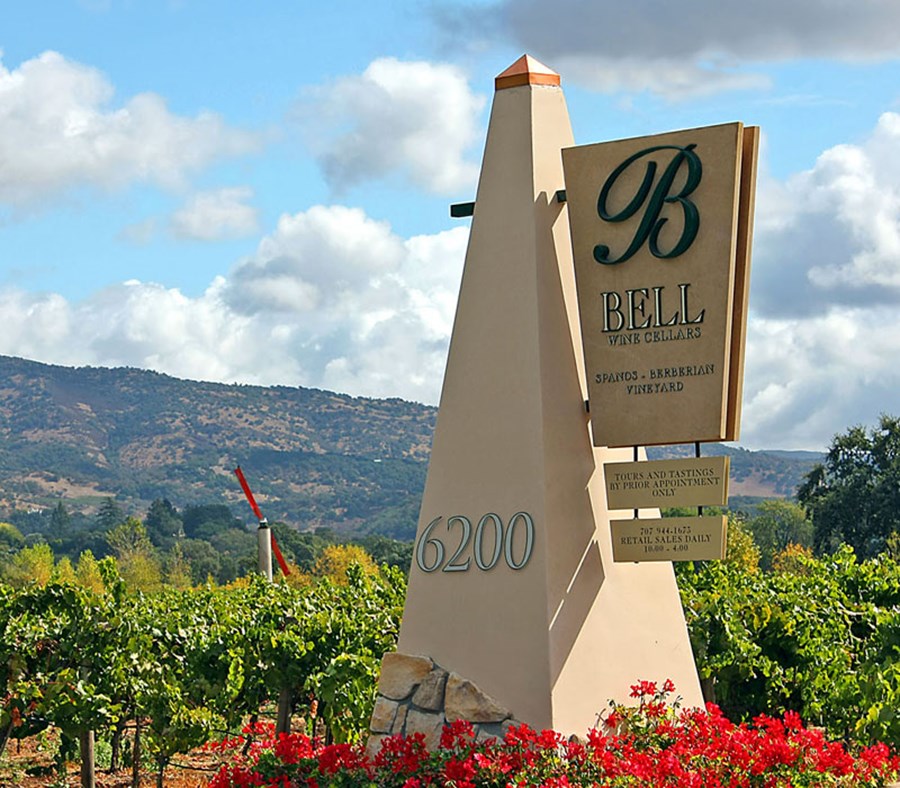 Originally
from South Africa, Anthony Bell has made wine in
the U.S. for
more than
35 years—first at
Beaulieu Vineyard in the late 1970s and since
1991 at Napa Valley’s Bell Wine
Cellars.
Originally
from South Africa, Anthony Bell has made wine in
the U.S. for
more than
35 years—first at
Beaulieu Vineyard in the late 1970s and since
1991 at Napa Valley’s Bell Wine
Cellars.
And, while well known among the
oenophile cognoscenti for his work on
rootstock choices for grafting and “clone 6”
Cabernet Sauvignon, his recent
wines are little known to most consumers. In fact,
with limited production
(14,000 cases annually) and a total of 22
different wines (many
offered only at the winery), opportunities for
wide distribution were limited.
However, efforts are now underway to get the word
out about at least five of
the wines produced and mechanisms are now in place
for nationwide
availability.
To gain insight into these five wines, we attended
a recent tasting Bell
conducted at The Wine Cellar, an upscale
retail shop in the Mercato
Shopping, Dining & Entertainment Plaza in
Naples, Florida. The following
are my notes and some comments about the wines.
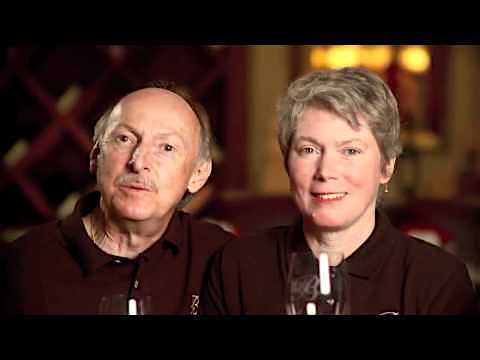
2013 Bell
Estate Bottled Yountville Chardonnay ($30)—Grapes for this wine
hailed from a Yountville estate surrounding the
winery. “The vineyard enjoys early morning fog and
cool growing conditions with
more sunlight and warmer daytime conditions than
the more southerly Oak Knoll
and Carneros regions, which allows for a wine with
rich fruit flavors and
excellent acidity,” commented Bell.
Following fermentation, 36% of the wine was
aged for six months in
neutral French oak barrels and the remainder in
stainless steel.
It showed a bouquet and light, elegant
taste of apples and pears, with a hint of oak in
its crisp finish. It makes a
worthy mate for shrimp, lobster and more deeply
flavored seafare like grilled
tuna and swordfish.
2014 Bell Red Blend
($23)—This
wine
is a blend of Cabernet Sauvignon (50%), Syrah
(37%), Zinfandel (11%) and
Petit Verdot (2%).
Bell noted that
“the growing season provided numerous
challenges—our third consecutive drought
year, the South Napa earthquake in August, and
late season hail—but we
harvested about two weeks early, with intensely
flavored berries.” The wine had
a fragrant bouquet and easy drinking fruity taste
of ripe strawberries and
plums with notes of chocolate in its finish. This
is a great “everyday” wine at
an excellent price that pairs well with a wide
range of fare, from smoked
salmon to hamburgers and even pizza.
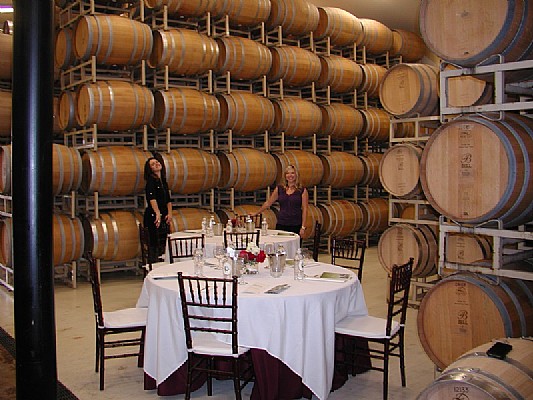
2013 Bell
Yountville Merlot ($50)—According
to Bell, Napa reds from the 2013 vintage should be
excellent, with ideal
growing conditions in most areas. This wine is
made from primarily
hand-harvested Merlot (95%) with the addition of a
small amount of Cabernet
Sauvignon (5%). Following fermentation, the wine
was aged for 20 months in oak
(97% French, 3% American). It had a bouquet and
rich taste of ripe plums and
chocolate, with a slightly tannic finish—perfect
to mate with beef and veal
dishes.
2012 Bell Cabernet
Sauvignon ($45)—Made
from a blend of primarily 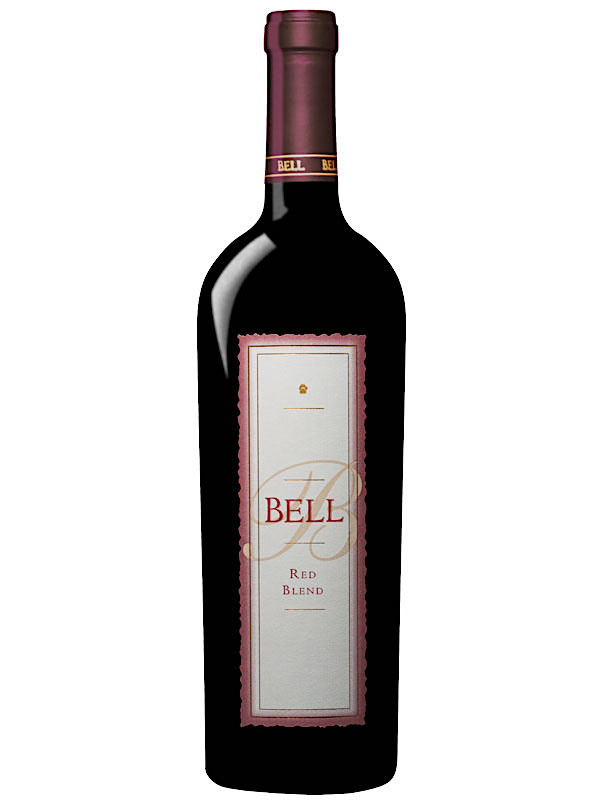 Cabernet Sauvignon (82%)
and smaller amounts of
Merlot, Cabernet Franc, Petit Verdot, Malbec and
Syrah, the wine was aged for
18 months in oak (86% French, 14% American) before
being bottled unfined and
with a gentle filtration. “The blending of the six
varietals provides the wine
with great complexity,” Bell says. I found it to
have a bouquet of cassis and
ripe raspberries and a well integrated taste of
fruit and oak. Prime rib and
lamb chops are ideal mates for this wine.
Cabernet Sauvignon (82%)
and smaller amounts of
Merlot, Cabernet Franc, Petit Verdot, Malbec and
Syrah, the wine was aged for
18 months in oak (86% French, 14% American) before
being bottled unfined and
with a gentle filtration. “The blending of the six
varietals provides the wine
with great complexity,” Bell says. I found it to
have a bouquet of cassis and
ripe raspberries and a well integrated taste of
fruit and oak. Prime rib and
lamb chops are ideal mates for this wine.
2013 Bell
Canterbury Syrah ($30)—For
this wine grapes from a Sierra Foothills vineyard,
noted for well drained
soils, were fermented and barrel-aged for 11
months in oak (59% French, 41%
American), followed by 10 months of bottle aging.
The wine showed a
bouquet and taste of ripe blackberries
and toast with a smooth finish.

B. Y. O. B. . . . AND OXYGEN
One Star House Party and
James Sharman, a chef at Copenhagen's Noma, are
offering a dinner at the base camp of Mount Everest, as
part of a 14-day trip that will start in Kathmandu in
Nepal on Dec. 10 and return on Dec. 23, at a cost of
$1,050 per person (excluding flights).
FOOD WRITING 101: NEVER POKE DISCONSOLATELY AT YOUR
FOOD,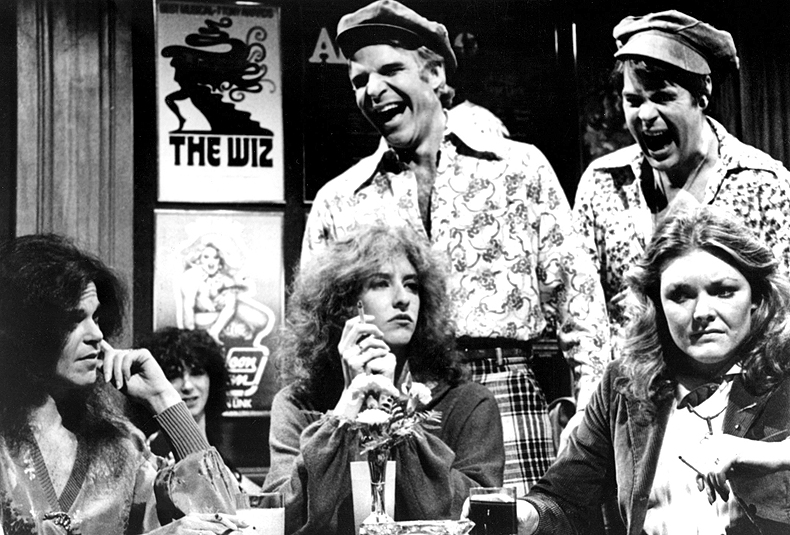
EAT DEMENTED DESSERTS OR PULSATE IN THE DINING
ROOM
“I love no steak better than
a rib-eye, but this one - a $54 investment - was a
mess. I took most of it home, where it made my dogs
happier than it had made me. . . . Perhaps I would
have been in a better humor had my $19 black-truffled,
twice-baked potato been filled with appealing fluff
rather than the semi-liquid glue at which I poked
disconsolately. . . . A wonderfully demented grilled
banana split the size of my laptop featured bananas
that had been halfheartedly (nay, quarterheartedly)
grilled. . . . For $45, this wasn't so much a dish as
it was a pro-forma assemblage. Like too many dishes
here, this is generic American "luxury" fare that
hasn't been well thought out. . . . This is a
pulsating mating ground for the 30s and 40s set - even
a bit beyond - with a thumping vintage soundtrack to
match. The not-so-young-and-restless of all
descriptions flock in to join the dance, united only
by hope and disposable income.”--Alison Cook, "Steak
48," Houston
Chronicle (10/19/16)
Any of John Mariani's books below may be ordered from amazon.com.
 The
Hound in Heaven (21st Century Lion Books)
is a novella, and for anyone who loves dogs,
Christmas, romance, inspiration, even the supernatural, I
hope you'll find this to be a treasured favorite.
The story concerns how, after a New England teacher,
his wife and their two daughters adopt a stray puppy found
in their barn in northern Maine, their lives seem full of
promise. But when tragedy strikes, their wonderful dog
Lazarus and the spirit of Christmas are the only things
that may bring his master back from the edge of
despair.
The
Hound in Heaven (21st Century Lion Books)
is a novella, and for anyone who loves dogs,
Christmas, romance, inspiration, even the supernatural, I
hope you'll find this to be a treasured favorite.
The story concerns how, after a New England teacher,
his wife and their two daughters adopt a stray puppy found
in their barn in northern Maine, their lives seem full of
promise. But when tragedy strikes, their wonderful dog
Lazarus and the spirit of Christmas are the only things
that may bring his master back from the edge of
despair. WATCH THE VIDEO!
“What a huge surprise turn this story took! I was completely stunned! I truly enjoyed this book and its message.” – Actress Ali MacGraw
“He had me at Page One. The amount of heart, human insight, soul searching, and deft literary strength that John Mariani pours into this airtight novella is vertigo-inducing. Perhaps ‘wow’ would be the best comment.” – James Dalessandro, author of Bohemian Heart and 1906.
“John Mariani’s Hound in Heaven starts with a well-painted portrayal of an American family, along with the requisite dog. A surprise event flips the action of the novel and captures us for a voyage leading to a hopeful and heart-warming message. A page turning, one sitting read, it’s the perfect antidote for the winter and promotion of holiday celebration.” – Ann Pearlman, author of The Christmas Cookie Club and A Gift for my Sister.
“John Mariani’s concise, achingly beautiful novella pulls a literary rabbit out of a hat – a mash-up of the cosmic and the intimate, the tragic and the heart-warming – a Christmas tale for all ages, and all faiths. Read it to your children, read it to yourself… but read it. Early and often. Highly recommended.” – Jay Bonansinga, New York Times bestselling author of Pinkerton’s War, The Sinking of The Eastland, and The Walking Dead: The Road To Woodbury.
“Amazing things happen when you open your heart to an animal. The Hound in Heaven delivers a powerful story of healing that is forged in the spiritual relationship between a man and his best friend. The book brings a message of hope that can enrich our images of family, love, and loss.” – Dr. Barbara Royal, author of The Royal Treatment.
 |
The Encyclopedia of American Food and Drink by John F. Mariani (Bloomsbury USA, $35) Modesty forbids me to praise my own new book, but let me proudly say that it is an extensive revision of the 4th edition that appeared more than a decade ago, before locavores, molecular cuisine, modernist cuisine, the Food Network and so much more, now included. Word origins have been completely updated, as have per capita consumption and production stats. Most important, for the first time since publication in the 1980s, the book includes more than 100 biographies of Americans who have changed the way we cook, eat and drink -- from Fannie Farmer and Julia Child to Robert Mondavi and Thomas Keller. "This book is amazing! It has entries for everything from `abalone' to `zwieback,' plus more than 500 recipes for classic American dishes and drinks."--Devra First, The Boston Globe. "Much needed in any kitchen library."--Bon Appetit. |
"Eating Italian will never be the same after reading John Mariani's entertaining and savory gastronomical history of the cuisine of Italy and how it won over appetites worldwide. . . . This book is such a tasteful narrative that it will literally make you hungry for Italian food and arouse your appetite for gastronomical history."--Don Oldenburg, USA Today. "Italian
restaurants--some good, some glitzy--far
outnumber their French rivals. Many of
these establishments are zestfully described
in How Italian Food Conquered the World, an
entertaining and fact-filled chronicle by
food-and-wine correspondent John F.
Mariani."--Aram Bakshian Jr., Wall Street
Journal.
"Equal parts
history, sociology, gastronomy, and just
plain fun, How Italian Food Conquered the
World tells the captivating and delicious
story of the (let's face it) everybody's
favorite cuisine with clarity, verve and
more than one surprise."--Colman Andrews,
editorial director of The Daily
Meal.com. "A fantastic and fascinating
read, covering everything from the influence
of Venice's spice trade to the impact of
Italian immigrants in America and the
evolution of alta cucina. This book will
serve as a terrific resource to anyone
interested in the real story of Italian
food."--Mary Ann Esposito, host of PBS-TV's
Ciao
Italia. "John Mariani has written the
definitive history of how Italians won their
way into our hearts, minds, and
stomachs. It's a story of pleasure over
pomp and taste over technique."--Danny Meyer,
owner of NYC restaurants Union Square
Cafe, The Modern, and Maialino.
|
 |
 |
 |
 |
 |
 |
 |
 |
 Everett Potter's Travel Report:
Everett Potter's Travel Report: 
 Eating Las Vegas
JOHN CURTAS has been covering the Las Vegas
food and restaurant scene since 1995. He is
the co-author of EATING LAS VEGAS – The 50
Essential Restaurants (the fourth
edition of which will be published in early
2016), as well as the author of the Eating Las
Vegas web site: www.eatinglasvegas.
He can also be seen every Friday morning as
the “resident foodie” for Wake Up With the
Wagners on KSNV TV (NBC) Channel 3 in
Las Vegas.
Eating Las Vegas
JOHN CURTAS has been covering the Las Vegas
food and restaurant scene since 1995. He is
the co-author of EATING LAS VEGAS – The 50
Essential Restaurants (the fourth
edition of which will be published in early
2016), as well as the author of the Eating Las
Vegas web site: www.eatinglasvegas.
He can also be seen every Friday morning as
the “resident foodie” for Wake Up With the
Wagners on KSNV TV (NBC) Channel 3 in
Las Vegas.

MARIANI'S VIRTUAL GOURMET
NEWSLETTER is published weekly. Editor/Publisher: John
Mariani.
Editor: Walter Bagley. Contributing Writers: Christopher Mariani,
Robert Mariani, Misha
Mariani,
John A. Curtas, Edward Brivio, Mort Hochstein,
Andrew Chalk, Dotty Griffith and Brian Freedman. Contributing
Photographers: Galina Dargery, Bobby
Pirillo. Technical Advisor: Gerry McLoughlin.
To un-subscribe from this newsletter,click here.
© copyright John Mariani 2016

